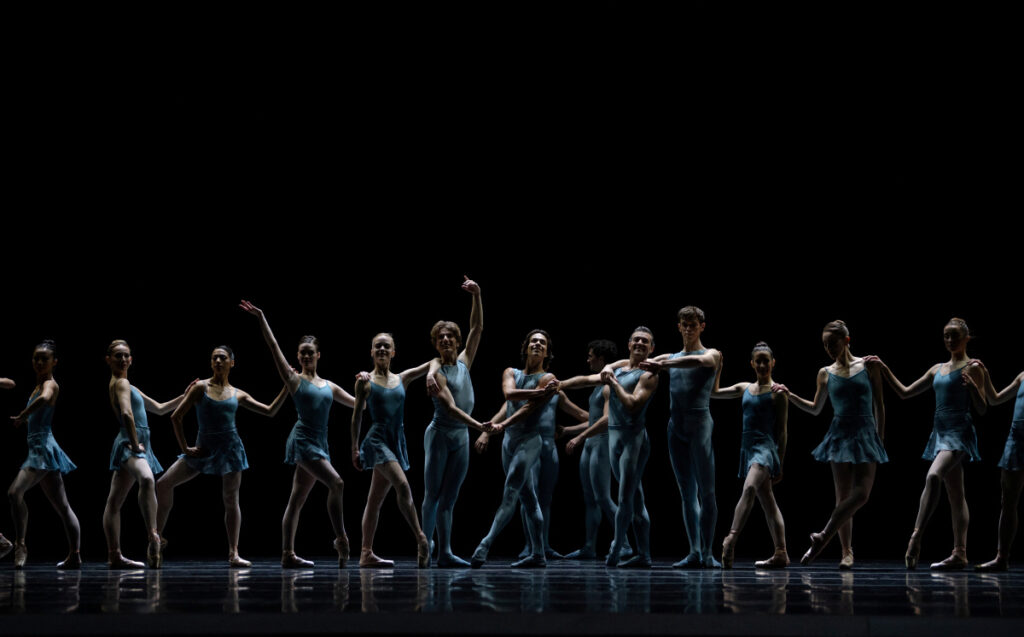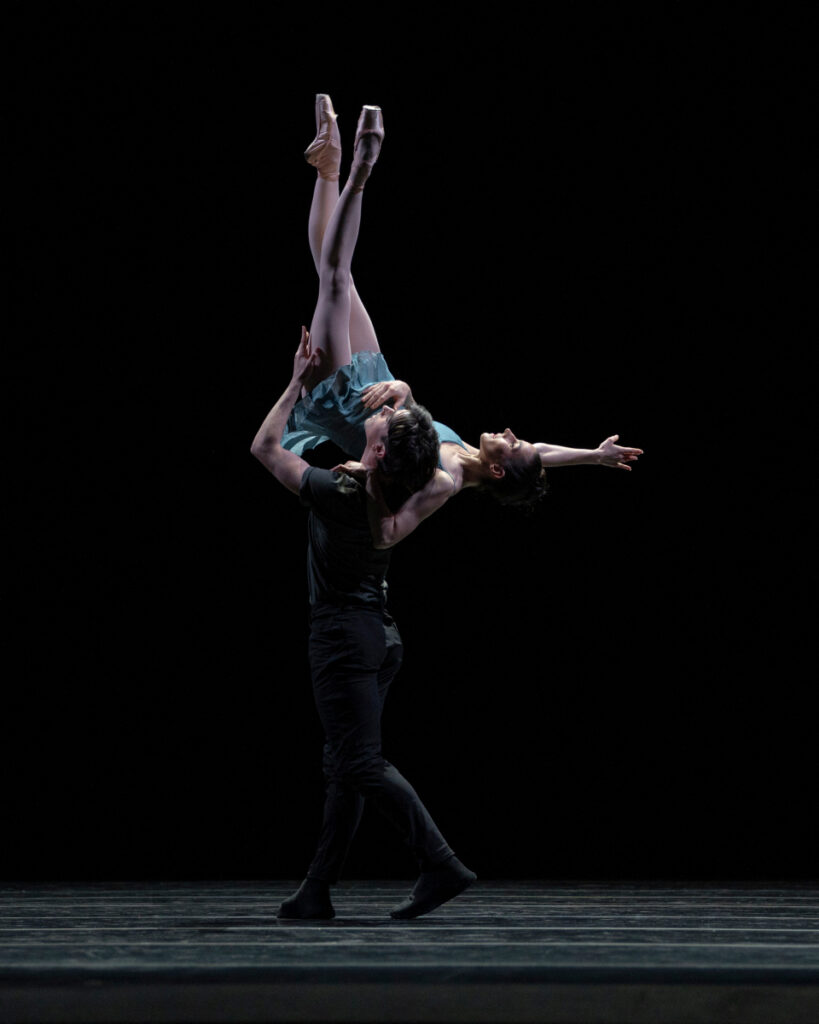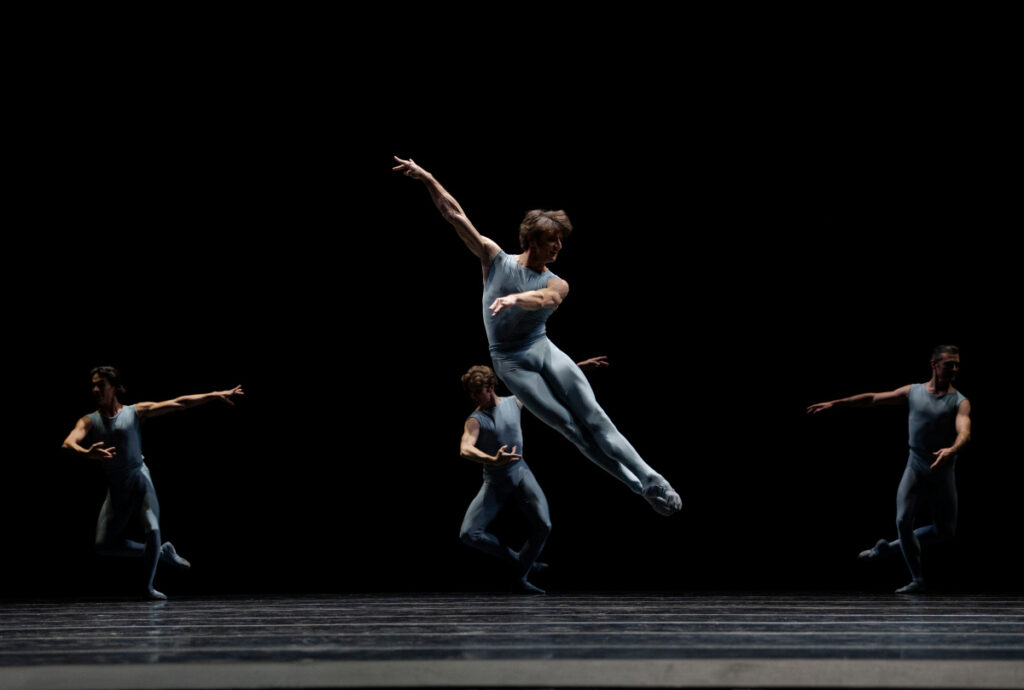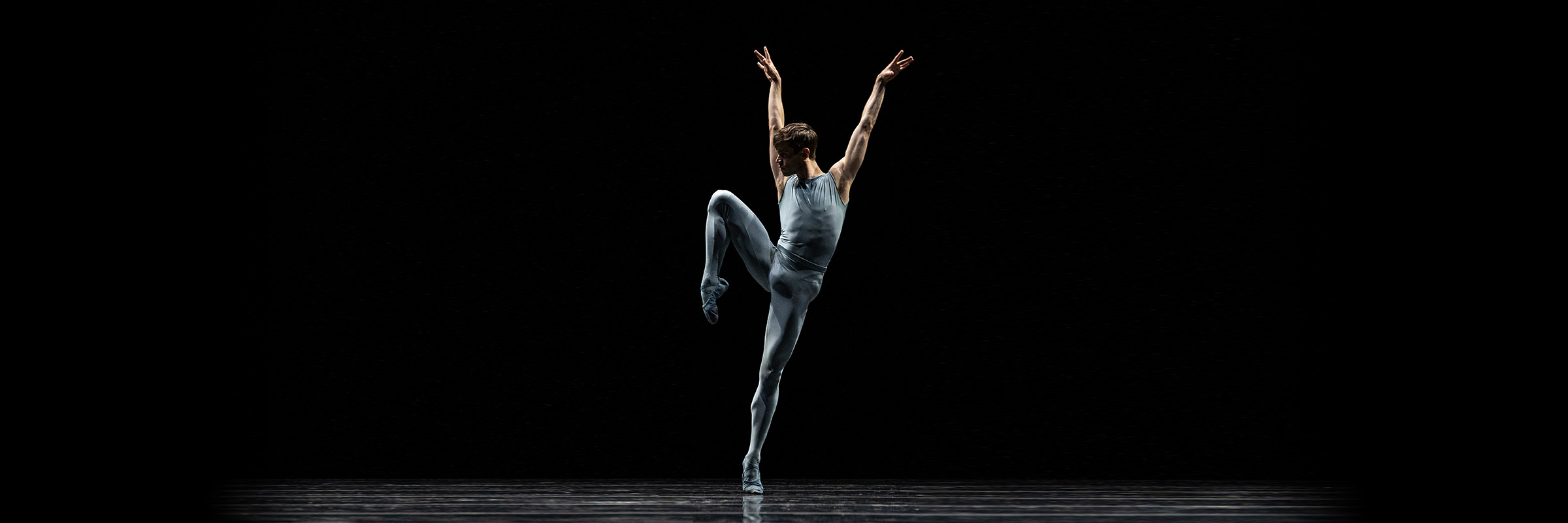About William Forsythe’s Blake Works I
“It lives and breathes. . . . It’s always evolving”
“It’s the perfect time to do a work like Blake Works I, which is a very celebratory piece,” says Ayman Harper, who staged William Forsythe’s ballet in San Francisco. “What better time than now to present what is essentially a love letter to ballet?” Set to seven songs from James Blake’s album The Colour in Anything, William Forsythe’s Blake Works I is a joyous tribute to the art of ballet from one of its most innovative creators.

Forsythe’s relationship with SF Ballet started in 1987 when, newly arrived artistic director Helgi Tomasson invited him to create a new work. New Sleep, set to Thom Willems’ electronic score, was fascinating for its compositional and conceptual complexity and electrifying for its accelerated and extreme movement—a cerebral and a visceral thrill. “It was very, very, very different from anything else the company had ever done,” remembers Tomasson, who was thrilled to be providing dancers—and audiences—with new challenges. “I think Bill is so inventive, he’s so incredibly smart and musical.”
Tomasson was eager to commission another premiere, but Forsythe was engrossed in directing and choreographing for Frankfurt Ballet, then for The Forsythe Company. SF Ballet instead imported Forsythe’s works shortly after they premiered, performing Artifact Suite; in the middle, somewhat elevated; and The Vertiginous Thrill of Exactitude. When choreographer Benjamin Millepied was at the helm of Paris Opera Ballet, Forsythe joined that company as a choreographic associate, shifting from the more contemporary work he had been drawn to squarely back to ballet for the 2016 Blake Works I, a celebration of the talent and style of the Paris dancers.

Coincidentally, that same year Tomasson finally got his wish: when Forsythe arrived to lead rehearsals for his 1999 Pas/Parts, he was inspired to make changes. He ended up rechoreographing three quarters of the ballet, effectively creating a new work that was renamed Pas/Parts 2016. “The relationship with San Francisco Ballet has been successful because of the dancers,” said Forsythe at the time. “The dancers are involved compositionally. They have that responsibility to be co-composers.”
When Ayman Harper came to SF Ballet to set Blake Works I in the spring of 2021, he too found the dancers ready not just to learn the steps but to collaborate in absorbing the intricacies of the ballet, from the subtleties of the movement to the emphases in the phrasing—in short the mental as well as the physical challenges. “I am grateful that the dancers trusted me to penetrate the surface level of the work,” says Harper, who in a rehearsal encouraged them to carefully consider the timing of the steps. “What are your musical contributions that will unfold in the form of a ballet?” he asked, later explaining that he “enjoys seeing the dancers riffing musically off one another” and adds, “you know, dancers are musicians by default.”

In Blake Works I, Forsythe starts with ballet vocabulary then tweaks it, layering complex, occasionally kaleidoscopic movement onto James Blake’s evocative vocals and electronic score. Blake Works I may look a bit different on San Francisco Ballet than it did on Paris Opera, or even Boston Ballet, who performed it in 2019, because Forsythe is open to allowing space for individuality and interpretation within the framework of the choreography. “What I value so much about Bill’s work is that it lives and breathes,” explains Harper. “It’s never static. It is something that is always evolving.”
During the initial rehearsals for Blake Works I, SF Ballet dancers were still in pandemic-safe pods, and relatively new to being back to rehearsals. The creativity of putting together Forsythe’s ballet felt like a gift after a year of lockdown, he says: “I felt like it was a very special time to walk into this building and work with these dancers. We really came together both artistically and on a human level.”
The Colors of Dance was part of the 2023 Repertory Season
by Caitlin Sims
Header Image: Henry Sidford in Forsythe’s Blake Works I // © Erik Tomasson








